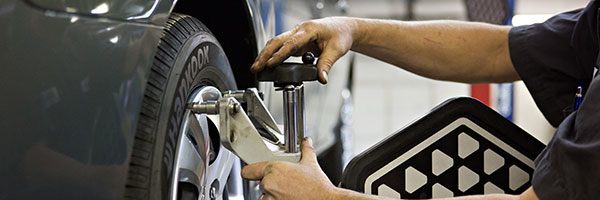Make an Appointment
Preventative - Auto Maintenance
Performing preventative auto maintenance on your vehicle means following the manufactures maintenance schedule planned explicitly for your vehicle. It's not auto service; it's a plan to prevent costly repair bills.
Benefits of Preventative - Auto Maintenance

Preventative maintenance schedules have been proven countless times to be worth every ounce of time and money put in them.
Maintenance plans will save on future repair costs and add value to your vehicle when you resell. When you take steps to perform regular maintenance and service, you'll reap several benefits and rewards you sow.
What are the Benefits of Preventative Auto Maintenance?
Performing routine maintenance is far cheaper than unexpected repairs. (tow cost, rental car, time off not planned, stranded)
Performing maintenance reduces your chances of being stranded and possibly put in unsafe situations.
Performing routine maintenance maintains the excellent performance of your vehicle.
Preventative maintenance means can budget for service instead of unexpected, sometimes large, repair bills.
An example of a preventative maintenance check at 30,000 miles intervals might look like this:
- Oil and oil filter change
- Rotate and balance tires
- Wheel alignment
- Inspect brakes pads
- Inspect suspension parts
- Inspect transmission fluid condition
- Inspect coolant fluid condition
- Inspect power steering fluid condition
- Inspect emissions and exhaust system
- Inspect tires
- Top off windshield wiper fluid
- Inspect wipers
- Inspect battery condition
- All exterior running lights
- Inspect serpentine belt (at 90,000 miles
- Inspect hose condition
- Look for fluid or oil leaks
- Air conditioning performance
- Air filter replacement
How is maintenance cheaper than repairs?
Examples...
Neglect brake pads now you need brake calipers, hoses, and pads
if you have a drive belt or serpentine belt, it can cause the car to overheat and damage the motor and leave you stranded
Why do I need a coolant flush?
Engine coolant, antifreeze, is designed to remove heat from your engine as your engine produces a lot of energy. It also keeps your engine from freezing in very cold conditions. Without coolant, your engine destroys itself pretty quickly. So you can see how important it is to maintain good coolant in your vehicle.
This is where the coolant flush comes in. Most fluids last around 30,000 miles. In that time, your coolant system accumulates rust, scale deposits, and build-up. It is important to get rid of these deposits because they can cause internal damage over time.
Getting a coolant flush will completely clean these particles from the system.
When you get a coolant flush, it is also common to receive an inspection of your entire cooling system, including the thermostat, radiator, and all hoses and belts. This is beneficial because it checks for leaks and other potential problems.
Old antifreeze usually becomes acidic. Once it starts to become acidic, it will break down and damage the water pump, the rubber hoses, and the aluminum components of the engine.
Why do I need a brake flush?
The quick answer is: Dirt, Debris and Moisture Causes Damage.
As the brake fluid moves through your brake system, it is designed to pick up dirt and debris from the brake system. This dirt and debris continue to circulate through the brake system until it is flushed out of the system.
This dirt and debris can make your brake system less effective, and lead to brake damage. Flushing the system pushes the debris out of your system leaving the new fluid installed ready and able to do its job well.
Moisture builds up in the system during regular brake use. This moisture impacts how well brake fluid does its job. As more moisture accumulates in the system, the brake fluid becomes watered down, and the system gets overloaded with water fluid. Regular brake flushing can prevent this and reduces your chances of expensive brake repairs.
Whenever there are dirt, debris, and moisture in any fluid in your vehicle, it can lead to damage and over time this can lead to costly repairs that could have been avoided!
Talk to one of our service advisors about when your vehicle may need a brake flush.
Why do I need a transmission flush?
Your transmission is the most expensive part to replace behind a new engine. So, it really pays off to take good care of it.
Transmission fluid is designed to keep your transmission parts working without grinding on each other and to keep the transmission cool. Transmission fluid collects particles that can interfere with these functions, causing your transmission to generate more friction and eventually more heat. These particles build up into sludge deposits in your transmission and interfere with shifting and acceleration.
A transmission flush maximizes the lifespan and performance of your transmission by keeping it clean. A transmission flush removes old transmission fluid, sludge, and grime allowing the new fresh fluid to do its job well.
Why do I need a power steering flush?
The power steering flush removes old, contaminated fluid, debris, and moisture that has builds up over time.
A power steering flush service will help keep various components of your steering system in good working condition. It also helps protect the power steering pump, which can be expensive to replace.
It is important to keep good fresh power steering fluid in the system. The benefits are a smoother steering experience and better handling, which means a safer environment for everyone in the vehicle.
Speak with one of our service advisors to find out if it is time for a power steering flush.